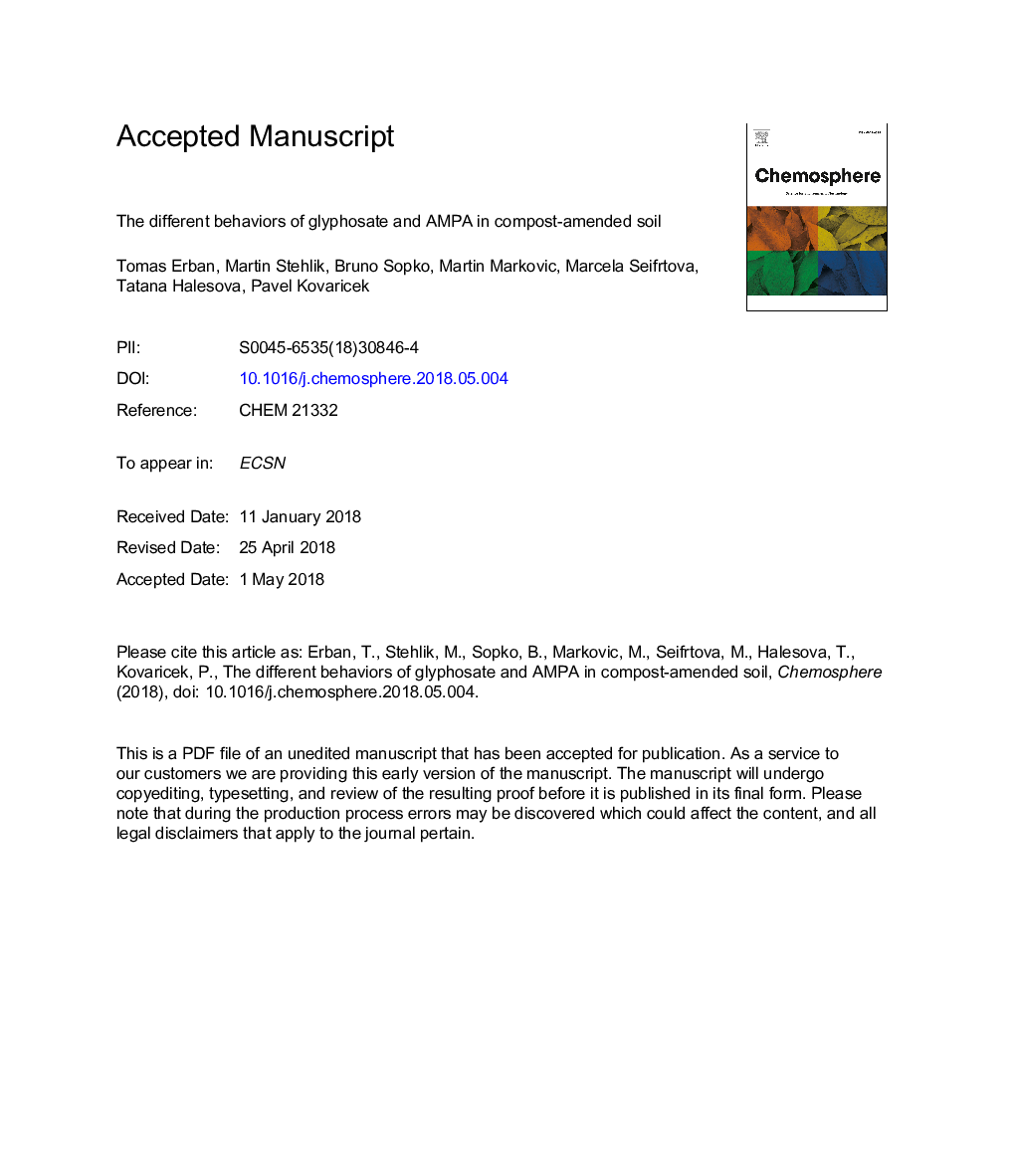| Article ID | Journal | Published Year | Pages | File Type |
|---|---|---|---|---|
| 8850758 | Chemosphere | 2018 | 24 Pages |
Abstract
The broad-spectrum herbicide glyphosate is one of the most widely used pesticides. Both glyphosate and its major metabolite, aminomethylphosphonic acid (AMPA), persist in waters; thus, their environmental fates are of interest. We investigated the influence of compost dose, sampling depth, moisture and saturated hydraulic conductivity (Ks) on the persistence of these substances. The amounts of AMPA quantified by triple quadrupole liquid chromatography-mass spectrometry (LC-QqQ-MS/MS) using isotopically labeled extraction standards were higher than those of glyphosate and differed among the samples. Both glyphosate and AMPA showed gradually decreasing concentrations with soil depth, and bootstrapped ANOVA showed significant differences between the contents of glyphosate and AMPA and their behavior related to different compost dosages and sampling depths. However, the compost dose alone did not cause significant differences among samples. Bayesian statistics revealed that the amounts of glyphosate and AMPA were both dependent on the sampling depth and compost dose, but differences were found when considering the physical factors of Ks and moisture. Glyphosate was influenced by moisture but not Ks, whereas AMPA was influenced by Ks but not moisture. Importantly, we found behavioral differences between glyphosate and its major metabolite, AMPA, related to the physical properties of Ks and moisture.
Keywords
Related Topics
Life Sciences
Environmental Science
Environmental Chemistry
Authors
Tomas Erban, Martin Stehlik, Bruno Sopko, Martin Markovic, Marcela Seifrtova, Tatana Halesova, Pavel Kovaricek,
